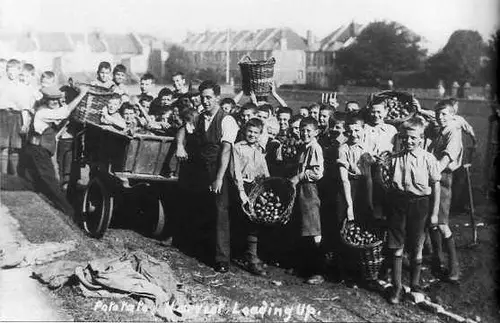Great Britain witnessed technological and economic advancements during Victorian era. A separate distinct class called the middle class evolved apart from the masses and the wealthy aristocrats. But those who were excluded from this Victorian model were the abandoned children without a past and without relations The orphans.
The orphans did not earn a status in the society but they were prevalent in the Victorian literature as respectable but troubled heroes and heroines. The Victorian authors portrayed an orphan as someone living in crowded and unsanitary conditions after losing both his parents. The descriptions of the orphans in Victorian literature are to be relied upon as it is probably the only source which narrates the history of Victorian orphans.
It is believed that the miracle which would take place in the life of an orphan is Adoption. Orphans were normally adopted by their immediate relatives, neighbours or couples without children. Laws related to adoption did not prevail in the Victorian era and so most of the instances of adoption were informal. Adoption of a child of the lower class by people of higher class, however, did not permit the child to maintain relations with the higher class.
Some of the orphans considered themselves lucky to get placed in educational institutions. The philanthropists of the Victorian era considered it a social responsibility to donate money to schools which were formed to educate the orphans and provide boarding facilities. Food, clothing, shelter and education were given to orphans until they turn seventeen. Once they attain the age of seventeen the orphans were expected to work and earn on their own.
But most of these education centres were not funded properly. Orphans were educated for the purpose of performing lower-middle class occupation such as that of a governess. To make matters worse the nutrition standards were not up to the standards and corporeal punishment excessively. In such poor conditions, diseases spread rapidly in the crowded centres.
As abandonment of children was quite often during the Victorian era a residential institution to take care of the orphans became the need of the hour. Thus orphanages were set up in different parts of United Kingdom as Group home, children home, rehabilitation centre and youth treatment centre.
The establishment of orphanages played a major role in reducing the infant mortality rates. The orphanages offered community-based living and learning to children. Though orphanages acted as a better option when compared to adoption and foster care, in some of the unregulated orphanages, children were subject to abuse and neglect.
Those orphans who were not admitted into educational centres or orphanages, nor adopted ended as criminals. Statistics prove that almost 60% of the criminals were orphans. But there were still some orphans searching for a ray of light in the darkness, living in the streets doing menial work and begging for money for their living.
